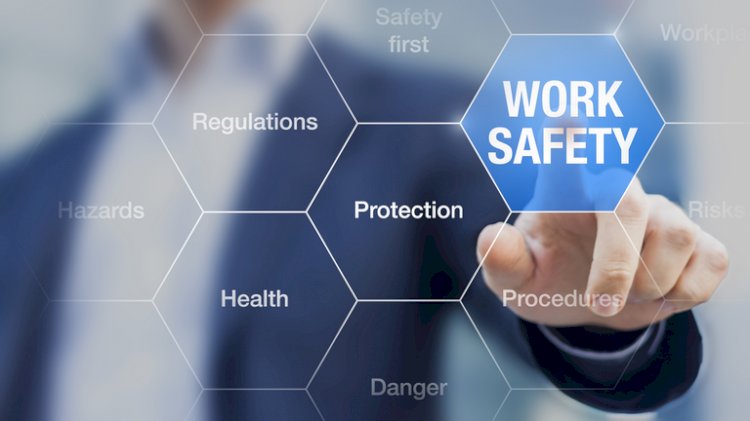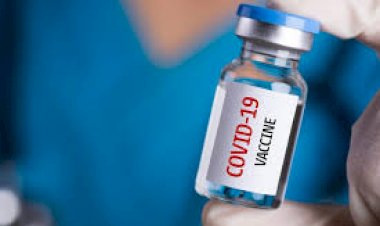How to Take Care of Employees Returning to Work During COVID – 19 Pandemic?
During these pandemic times, the entire globe implemented emergencies and lockdowns to make sure that not only does the spread of the virus slows down but also we are acquainted with how to live with the virus.

During these pandemic times, the entire globe implemented emergencies and lockdowns to make sure that not only does the spread of the virus slows down but also we are acquainted with how to live with the virus. Companies are now slowly opening up allowing a limited number of employees to get back to work. Even the limited number of employees coming back to work are a responsibility of the organisation. Below are a few suggestions companies can follow for returning employees.
Having Workplace Policies
There should be appropriate workplace policies, programmes and procedures in place to ensure safety of the employees as well as the work place. These policies, programmes and procedures must be agreed upon jointly. The decisions must not be left solely to employers. Any policies, programmes and procedures only work when they are followed. A protocol to effectively monitor their implementation should also be jointly agreed upon.
Identifying the Hazard
To identify the hazard, focus is first on persons who have been travelling or exposed to infected individuals or any large groups of people as potential carriers. However, we being in the community transmission stage, the virus can be transmitted through anybody, thus checking for symptoms in all employees who attend office is very important. It is now known that the virus can be transmitted before symptoms appear thus, everyone should be aware of the symptoms, for their own sake as well as others.
Controlling the Risk
If a hazard is identified, eliminate or completely isolate the hazard as a first choice; minimize the risk by eliminating, so far as possible, opportunities for transmission of the virus; and finally provide effective personal protective equipment. Since it is impossible to eliminate or completely isolate the hazard in this case, since any person in the workplace – whether worker, contractor, customer or visitor – may be a carrier, then minimizing the risk means implementing the strategies of:
- Personal Hygiene - Frequent and thorough hand-washing with plenty of soap and water, and easily available hand sanitizing stations at strategic locations and throughout the workplace. Posters explaining how to do “thorough” hand-washing can be helpful. A minimum of 20 seconds with plenty of soap or detergent and water is necessary to disinfect hands. Teach employees to avoid touching face: eyes, nose, or mouth, with unwashed hands. Drying with paper towels is preferred to air-blow dryers which can disperse any remaining viruses widely. Promote good respiratory hygiene in the workplace – encourage everyone, if they need to sneeze or cough, to use a tissue to fully cover their nose and mouth, or if none is available, to cough or sneeze into the crook of their arm.
- Workplace Hygiene -Cleaning staff should be informed or trained on how to properly disinfect. Frequent cleaning of workplace surfaces and equipment, especially at shift-change, can help reduce transmission. Employers should ensure that adequate supplies are stocked of such things as cleaning supplies, tissues, first aid supplies, and personal protective equipment. Ensure good rates of air exchange (ventilation) in the workplace. Potentially contaminated waste, including used tissues should be disposed of safely. If the virus is likely to be present in the waste materials seek advice on disposal.
- Social distancing - Wherever possible, provide increased space between workers (two meters or more) and allow working from home and flexible schedules or staggered shifts where possible to reduce the number of workers who come in close contact with each other. Cancel all non-essential travel and meetings, substitute virtual meetings wherever possible. Workers in high-risk categories because of age or pre-existing medical conditions should be particularly accommodated.
Handling Sick or Suspected Cases of Infection
If a suspected case has been identified in the workplace, medical advice should be sought and the person should be sent home (or to medical care in serious cases) immediately. While awaiting transportation home, the individual should be isolated from others – a mask worn by the individual with the suspected infection can reduce the chance of the virus being passed to others via droplets. All items and surfaces that the individual has been in contact with need to be disinfected; and all people that s/he may have been in contact with should be identified and monitored.
In conclusion, COVID-19 presents new challenges for health and safety in the workplace, but following preventive measures can ensure the safety of your employees.
During these pandemic times, the entire globe implemented emergencies and lockdowns to make sure that not only does the spread of the virus slows down but also we are acquainted with how to live with the virus. Companies are now slowly opening up allowing a limited number of employees to get back to work. Even the limited number of employees coming back to work are a responsibility of the organisation. Below are a few suggestions companies can follow for returning employees.
Having Workplace Policies
There should be appropriate workplace policies, programmes and procedures in place to ensure safety of the employees as well as the work place. These policies, programmes and procedures must be agreed upon jointly. The decisions must not be left solely to employers. Any policies, programmes and procedures only work when they are followed. A protocol to effectively monitor their implementation should also be jointly agreed upon.
Identifying the Hazard
To identify the hazard, focus is first on persons who have been travelling or exposed to infected individuals or any large groups of people as potential carriers. However, we being in the community transmission stage, the virus can be transmitted through anybody, thus checking for symptoms in all employees who attend office is very important. It is now known that the virus can be transmitted before symptoms appear thus, everyone should be aware of the symptoms, for their own sake as well as others.
Controlling the Risk
If a hazard is identified, eliminate or completely isolate the hazard as a first choice; minimize the risk by eliminating, so far as possible, opportunities for transmission of the virus; and finally provide effective personal protective equipment. Since it is impossible to eliminate or completely isolate the hazard in this case, since any person in the workplace – whether worker, contractor, customer or visitor – may be a carrier, then minimizing the risk means implementing the strategies of:
- Personal Hygiene - Frequent and thorough hand-washing with plenty of soap and water, and easily available hand sanitizing stations at strategic locations and throughout the workplace. Posters explaining how to do “thorough” hand-washing can be helpful. A minimum of 20 seconds with plenty of soap or detergent and water is necessary to disinfect hands. Teach employees to avoid touching face: eyes, nose, or mouth, with unwashed hands. Drying with paper towels is preferred to air-blow dryers which can disperse any remaining viruses widely. Promote good respiratory hygiene in the workplace – encourage everyone, if they need to sneeze or cough, to use a tissue to fully cover their nose and mouth, or if none is available, to cough or sneeze into the crook of their arm.
- Workplace Hygiene -Cleaning staff should be informed or trained on how to properly disinfect. Frequent cleaning of workplace surfaces and equipment, especially at shift-change, can help reduce transmission. Employers should ensure that adequate supplies are stocked of such things as cleaning supplies, tissues, first aid supplies, and personal protective equipment. Ensure good rates of air exchange (ventilation) in the workplace. Potentially contaminated waste, including used tissues should be disposed of safely. If the virus is likely to be present in the waste materials seek advice on disposal.
- Social distancing - Wherever possible, provide increased space between workers (two meters or more) and allow working from home and flexible schedules or staggered shifts where possible to reduce the number of workers who come in close contact with each other. Cancel all non-essential travel and meetings, substitute virtual meetings wherever possible. Workers in high-risk categories because of age or pre-existing medical conditions should be particularly accommodated.
Handling Sick or Suspected Cases of Infection
If a suspected case has been identified in the workplace, medical advice should be sought and the person should be sent home (or to medical care in serious cases) immediately. While awaiting transportation home, the individual should be isolated from others – a mask worn by the individual with the suspected infection can reduce the chance of the virus being passed to others via droplets. All items and surfaces that the individual has been in contact with need to be disinfected; and all people that s/he may have been in contact with should be identified and monitored.
In conclusion, COVID-19 presents new challenges for health and safety in the workplace, but following preventive measures can ensure the safety of your employees.

 Vijay
Vijay 
































